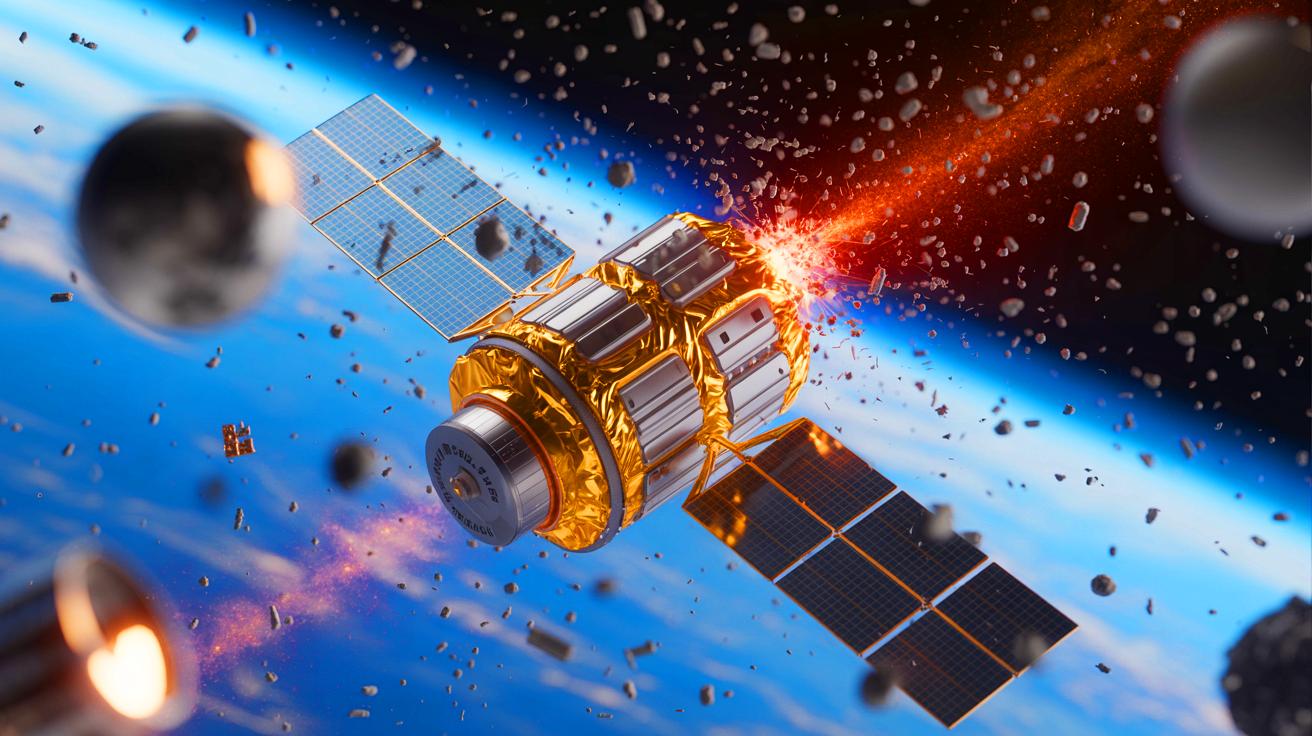- 🚀 Scientists at Texas A&M University have developed a self-healing polymer to protect satellites from space debris.
- 🛡️ The Diels-Alder Polymer (DAP) features dynamic covalent bonds that allow it to absorb impacts and reform quickly.
- 🔬 Tested in a laboratory at the nanoscale, DAP shows promise for space and military applications on Earth.
- 🌌 Researchers aim to scale this technology for real-world use, addressing one of space exploration’s key challenges.
Space debris poses a significant threat to our satellites and other space infrastructure. Objects in low Earth orbit (LEO) travel at speeds exceeding 18,000 miles per hour, making even the smallest fragments capable of causing catastrophic damage. As the number of satellites and debris increases, scientists are in a race against time to find solutions. Texas A&M University’s groundbreaking discovery of a self-healing polymer could be the answer. This innovative material has the potential to shield satellites from the relentless barrage of space debris, revolutionizing how we protect our space assets.
A Breakthrough in Polymer Science
The Texas A&M University team has developed a new material known as the Diels-Alder Polymer (DAP), named for its dynamic covalent bond networks. These bonds can break and reform, giving the material its self-healing properties. What sets DAP apart is its unique chemistry and topology, which allow it to stretch and absorb impacts without sustaining significant damage.
Unlike other materials that may crack or shatter upon impact, DAP reforms its structure quickly, though sometimes in a different configuration. This behavior was observed when tested in a laboratory setting at the nanoscale. The findings, published in the journal Materials Today, highlight the polymer’s potential for space applications. According to Dr. Svetlana Sukhishvili, a professor at Texas A&M, this is the first instance of a material displaying such a response at any scale. This innovation could not only protect satellites but also enhance the durability of space vehicle windows against micrometeoroids.
Implications for Space and Defense Industries
The potential applications of DAP extend beyond space. The material’s properties make it a candidate for military applications on Earth, such as body armor. Dr. Edwin Thomas, another professor involved in the research, explains that the polymer’s versatility stems from its ability to change its physical state with temperature variations. At lower temperatures, DAP is stiff and strong, but as the temperature rises, it becomes elastic and eventually flows like a liquid.
This adaptability was demonstrated using a cutting-edge testing method known as LIPIT (laser-induced projectile impact testing). During these tests, a minuscule silica projectile was launched at the polymer, and the impacts were recorded using an ultrahigh-speed camera. The results showed that DAP absorbs a significant portion of the projectile’s kinetic energy, liquefies upon impact, and then returns to its original form. Such resilience could transform how we approach protective materials in various industries.
The Science Behind Self-Healing
The self-healing capabilities of DAP were initially surprising to researchers. Upon testing, they found no visible perforations, leading them to believe the projectile had missed. However, they soon realized the polymer had absorbed and distributed the impact energy, demonstrating its self-healing properties. When the polymer is struck, it melts and allows the projectile to pass, then quickly cools and reforms its covalent bonds, effectively mending itself.
This remarkable ability to recover from impacts could revolutionize materials science, especially for applications where durability and longevity are crucial. The researchers noted that while the results are promising, these properties have only been tested at the nanoscale. The behavior of DAP at larger scales remains to be seen, necessitating further research to fully understand its potential and limitations.
Future Prospects and Challenges
The discovery of the Diels-Alder Polymer opens new doors for innovation in both the space and defense sectors. However, scaling this technology from the laboratory to real-world applications poses significant challenges. Researchers must determine how DAP will perform under different environmental conditions and whether it can be produced economically at a larger scale. Despite these hurdles, the potential benefits of a self-healing material in space missions are undeniable.
As we continue to send more satellites into orbit and explore deeper into space, the ability to self-repair could become a vital asset. Will the Diels-Alder Polymer usher in a new era of resilient space technology, or will other emerging materials take the lead in the race to protect our cosmic ventures?
Did you like it? 4.5/5 (20)
